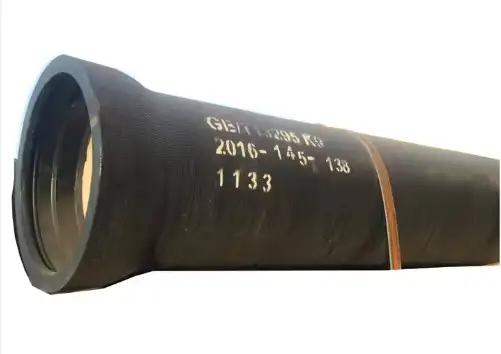Ductile iron, also known as nodular or spheroidal graphite iron, is a versatile material widely used in industrial applications due to its unique combination of strength, ductility, and castability. One critical question engineers and manufacturers often ask is: Does ductile iron work harden? This article provides a detailed analysis of ductile iron’s work-hardening behavior, compares it with other materials, and answers common technical questions.

What Is Work Hardening?
Work hardening (strain hardening) is the process by which a metal becomes stronger and harder due to plastic deformation. When a metal is subjected to mechanical stress beyond its yield point, dislocations in its crystal structure multiply and entangle, increasing resistance to further deformation.
Work Hardening in Ductile Iron
Ductile iron exhibits limited work-hardening capacity compared to metals like steel or aluminum. Its microstructure—comprising spheroidal graphite nodules embedded in a ferritic or pearlitic matrix—reduces stress concentration and inhibits dislocation propagation. However, under specific conditions, ductile iron can experience localized hardening.
Key Factors Influencing Work Hardening:
-
Matrix Structure:
-
Ferritic ductile iron (soft, ductile) shows minimal work hardening.
-
Pearlitic or martensitic grades (harder) may exhibit moderate hardening.
-
-
Deformation Rate:
Rapid deformation (e.g., cold forging) increases dislocation density. -
Temperature:
Cold working enhances hardening; hot working reduces it.
Ductile Iron vs. Other Metals: Work-Hardening Comparison
The table below compares work-hardening behavior across materials:
| Material | Work-Hardening Capacity | Yield Strength (MPa) | Ductility (%) | Common Applications |
|---|---|---|---|---|
| Ductile Iron | Low to Moderate | 250–800 | 10–25 | Pipes, gears, automotive parts |
| Mild Steel | High | 200–250 | 15–25 | Structural beams, machinery |
| Aluminum Alloy | Moderate | 100–550 | 10–30 | Aerospace, automotive panels |
| Austenitic Stainless Steel | Very High | 200–300 | 40–60 | Medical devices, cryogenic tanks |
Applications of Ductile Iron’s Work-Hardening Properties
Despite limited strain hardening, ductile iron is preferred for:
-
Pressure-Retaining Components:
-
Hydraulic systems benefit from its fatigue resistance.
-
-
Automotive Crankshafts:
-
Pearlitic grades withstand cyclic loads without cracking.
-
-
Earthquake-Resistant Structures:
-
Absorbs energy through controlled deformation.
-
6 Common Questions About Ductile Iron Work Hardening
1. Can Ductile Iron Be Cold Worked to Enhance Hardness?
Cold working ductile iron is uncommon due to its brittleness. However, processes like shot peening or surface rolling induce compressive stresses, improving fatigue life. For bulk hardening, heat treatment (e.g., quenching and tempering) is more effective.
Example:
Shot peening a ductile iron gear increases surface hardness by 10–15%, reducing wear.
2. How Does Ductile Iron Compare to Steel in Work Hardening?
Steel’s face-centered cubic (FCC) structure allows extensive dislocation movement, leading to significant work hardening. Ductile iron’s graphite nodules disrupt dislocation pathways, limiting hardening.
Case Study:
A cold-rolled steel sheet achieves 50% higher yield strength post-deformation, while ductile iron gains <10%.
3. Does Microstructure Affect Work Hardening in Ductile Iron?
Yes:
-
Ferritic Matrix: Low carbon content minimizes hardening.
-
Pearlitic Matrix: Lamellar cementite/ferrite layers offer moderate hardening.
-
Martensitic Matrix: Achieved via heat treatment; high hardness but low ductility.
4. Is Work-Hardened Ductile Iron Suitable for Dynamic Loads?
Ductile iron’s damping capacity makes it ideal for dynamic applications (e.g., engine blocks). Work hardening is less critical here than fatigue resistance.
Industry Standard:
ASTM A536 Grade 80-55-06 is widely used for high-stress components.
5. How to Measure Work Hardening in Ductile Iron?
Use hardness tests (Rockwell, Brinell) or tensile testing to quantify yield strength changes. Microstructural analysis (SEM) reveals dislocation density.
6. Can Alloying Elements Improve Work Hardening?
Adding elements like copper or nickel stabilizes austenite, enhancing strain hardening. However, this increases cost and complexity.
